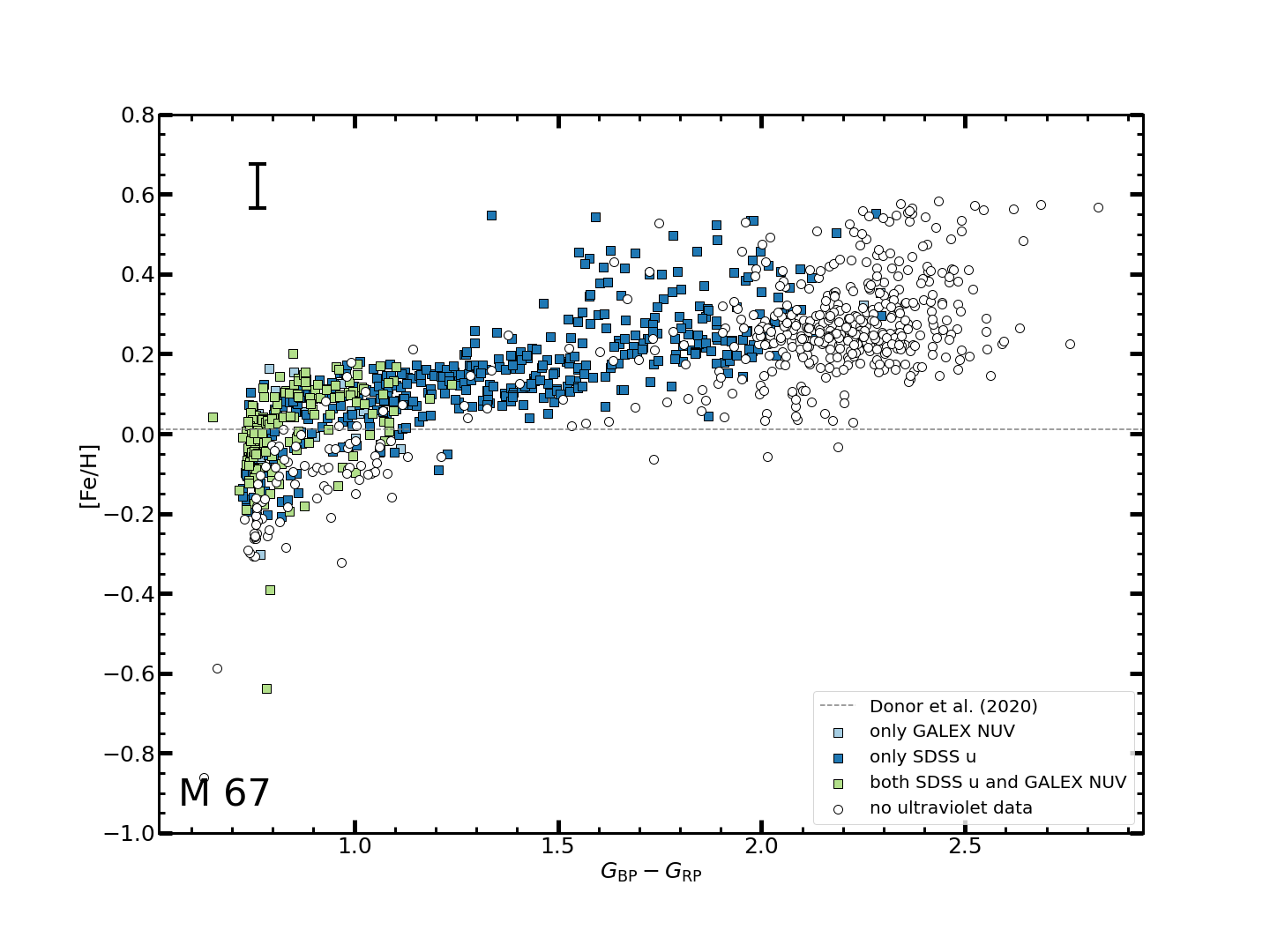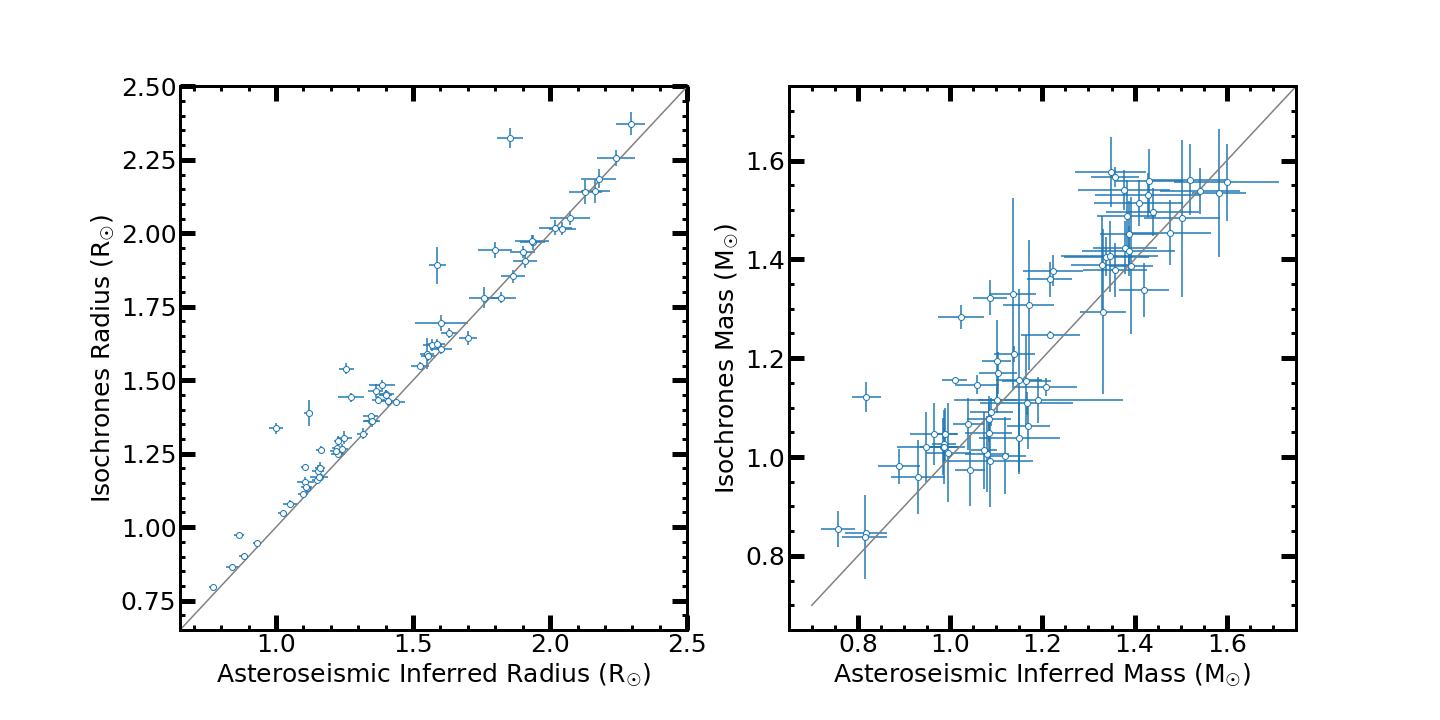Large Scale Photometric Stellar Parameter Inference
Precision stellar parameter inferences have historically relied on high-resolution spectroscopy. Despite the great precision of spectroscopic parameters inference, stellar spectroscopy suffers from several limitations including expensive hardware and restricted observation depth.
Compared to spectroscopy, imaging data is much easier and more economical to obtain on a large scale. The selection criteria for photometric surveys are much less demanding compared to complex targeting for spectroscopy, leading to better spatial coverage and covering full parameter space.
We tested the precision and accuracy of a novel stellar parameters inference method by fitting multi-wavelength photometry, Gaia astrometry and 3-D dustmap to the MIST Isochrones and Evolution Tracks (Dotter 2016; Choi et al. 2016; Paxton et al. 2011, 2013, 2015). We demonstractes that the precision of the photometric [Fe/H] from our inference is comparable to [Fe/H] from spectroscopic surveys, and the mass/radius inference is accurate in comparison to asteroseismic-inferred mass/radius.
We verified the precision of our [Fe/H] inference with 7 open clusters. Stars in open clusters were formed from the same giant molecular cloud and therefore have approximatelty the same age and chemical compositions. Thus the dispersion of the inferred [Fe/H] within a single open cluster can be used as an indicator of the precision of the inference method. Our analysis shows that our inference method derives accurate [Fe/H] for the turnoff stars and main sequence stars down to the color limit of $G_{\text{BP}}-G_{\text{RP}}$ about 1.5 which corresponds to K5 stars with the typical precision of 0.13 dex. Our inferred [Fe/H] also generally agrees with spectroscopy-inferred [Fe/H] with the offset within the $3\sigma$ confidence interval, and the dispersion of inferred [Fe/H] is comparable to the dispersion of spectroscopy-inferred [Fe/H] within a open cluster.

To verify the accuracy of inferred mass and radius, we compare our inferred masses and radii with the asteroseismic informed masses and radii from the Kepler Asteroseismic LEGACY Sample (Silva Aguirre et al. 2017). The mean percentage offset the masses is 4.0% and the mean percentage offset of the radii is 4.3%. Both the inferred radius and mass are consistent with the asteroseismic inferred radius and mass, with most offsets within the $3 \sigma$ confidence interval.

The inference method will have wide applicability for galactic and stellar archaeology in the era of the Vera C. Rubin Observatory’s Legacy Survey of Space and Time (LSST).
